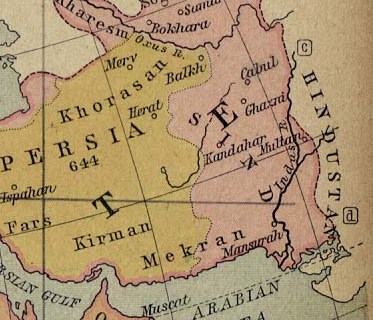Ficheiro:Ancient Khorasan highlighted.jpg
Ancient_Khorasan_highlighted.jpg (373 × 320 píxeis, tamanho: 58 kB, tipo MIME: image/jpeg)
Histórico do ficheiro
Clique uma data e hora para ver o ficheiro tal como ele se encontrava nessa altura.
| Data e hora | Miniatura | Dimensões | Utilizador | Comentário | |
|---|---|---|---|---|---|
| atual | 19h07min de 22 de outubro de 2010 |  | 373 × 320 (58 kB) | Officer | {{Information |Description= |Source= |Date= |Author= |Permission= |other_versions= }} |
Utilização local do ficheiro
A seguinte página usa este ficheiro:
Utilização global do ficheiro
As seguintes wikis usam este ficheiro:
- an.wikipedia.org
- ar.wikipedia.org
- arz.wikipedia.org
- azb.wikipedia.org
- ba.wikipedia.org
- bn.wikipedia.org
- ca.wikipedia.org
- ckb.wikipedia.org
- de.wikipedia.org
- el.wikipedia.org
- en.wikipedia.org
- Muslim conquests of Afghanistan
- History of Afghanistan
- Kabul
- Al-Mansur
- Muslim conquest of Persia
- Greater Khorasan
- Jewish mythology
- History of Arabs in Afghanistan
- Portal:Afghanistan
- Delhi–Multan road
- Talk:Afghanistan/Archive 8
- Siege of Kabul (1504)
- User:Northamerica1000/Portals of the world
- User:HistoryofIran/Greater Khorasan
- List of sieges of Kabul
- User:Falcaorib/Medieval Empires (500-650 AD)
- User:Falcaorib/Afghanistan
- User:Falcaorib/Iran
- en.wiktionary.org
- eo.wikipedia.org
- es.wikipedia.org
- fa.wikipedia.org
Ver mais utilizações globais deste ficheiro.
